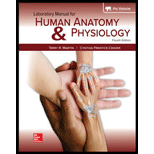
Concept explainers
The type of
a. catabolism
b. anabolism
c. synthesis
d. active transport
Introduction:
The living organisms are considered living because there are many non-living processes being carried out in the body to make the body living. The vital processes that occur in our body are on a mission to maintain homeostasis in the body. Homeostasis is the equilibrium of the body between interdependent elements.
Answer to Problem 1PL
Correct answer:
The correct answer is option (a) catabolism.
Explanation of Solution
Explanation/justification for the correct answer:
Option (a) catabolism. Catabolism is the breakdown reactions in which biomolecules are broken down into their simpler forms along with the release of energy. Catabolic reactions are also called as destructive metabolism. So, the correct answer is option (a).
Explanation for incorrect answer:
Option (b) anabolism. Anabolism is the opposite of catabolism in which large biomolecules are formed from their simpler precursors along with the storage of energy. They are also known as constructive metabolism. So, this is an incorrect option.
Option (c) synthesis. Energy is released during breakdown while energy is stored during synthesis. So, this is an incorrect answer.
Option (d) active transport. Active transport is a mechanism of transport of molecules from one place to another in the cell. It is not involved in synthesis or breakdown. Although during active transport, energy is required, it is not a metabolic reaction.
Want to see more full solutions like this?
Chapter 56 Solutions
Laboratory Manual For Human Anatomy & Physiology
- The production of ATP (cellular respiration) is actually a(n) rxn. However, the reaction requires the of Glucose. A. catabolic : anabolism B. anabolic : catabolism C. exergonic : endergonic conversion D. hydrolytic : dehydrationarrow_forwardWhich of the following serves as an important energy carrier in cells? A. RNA B. DNA C. ATParrow_forwardWhat is the definition of a catabolic metabolic pathway? A. A pathway that releases energy and releases matter B. A pathway that stores energy and releases matter C. A pathway that releases energy and stores matter D. A pathway that stores energy and stores matterarrow_forward
- Inactive precursors to enzymes are called: a. Zymogen b. Apoenzyme c. Cofactor d. Isozymesarrow_forwardWhich of the following molecules serve as a reactant in both the aerobic respiration and fermentation process? A. Glucose B. Carbon Dioxide C. Oxygen D. Ethanolarrow_forwardwhich of the following is true about glycolysis? A. occurs in mitochondria B. complete breakdown of glucose C. conversion of glucose to 3 carbon units D. 3 ATP are utilised in anaerobic pathwayarrow_forward
- Cellular respiration is best described by which of the following? A. Catabolic Reaction B. Anabolic Reaction C. Exchange Reaction D. Both A & Carrow_forwardWhich of the following choices BEST describes metabolism? a. breakdown of biomolecules b. controlled by enzymes and involved ATP c. all of the choices are correct d. synthesis of biomoleculesarrow_forwardThe correct enzyme involved in synthesizing atp from adp is: a. Kinase b. Protease c. Phosphorylasearrow_forward
- Which of the following is true of metabolism? A. Degradative reactions require an input of energy. B. Synthetic pathways are anabolic. C. Catabolism and anabolism are linked by O2. D. Catabolic reactions require the breakdown of ATP, and anabolic reactions generate ATP.arrow_forwardYour friend is researching cellular respiration in eukaryotes. When you visit their lab, you recognize that they are specifically looking in the cytosol. Which process of cellular respiration is your friend likely focusing their research on? a. Glycolysis b. Pyruvate oxidation c. Chemiosmosis d. Citric acid cyclearrow_forwardWhich process produces the greatest supply of potential energy in the form of ATP? Select one: a. Hydrolysis b. Oxidative metabolism c. Rephosphorylation d. Non-oxidative rapid glycolysisarrow_forward

